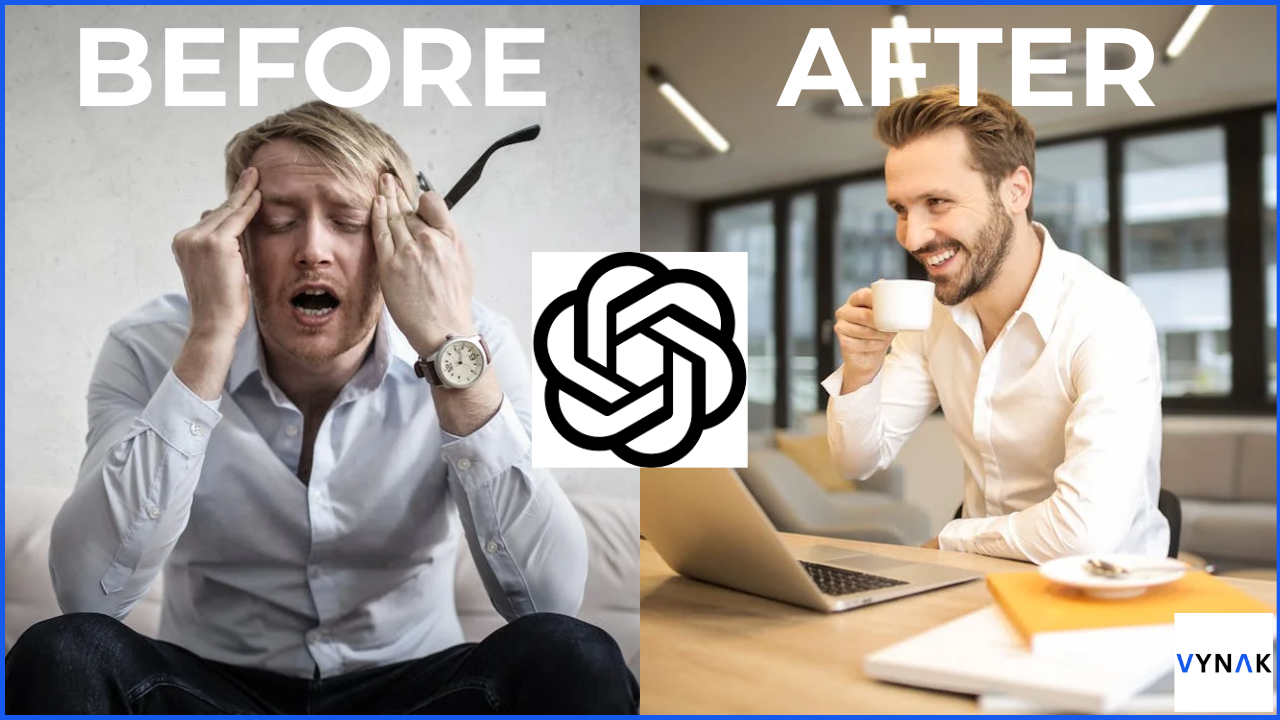#1: How I Used AI as a Business Coach—And What It Taught Me About Consumers

Before ChatGPT took over the internet, I used to rely only on journaling and speaking to other people when I needed to flesh out my ideas.
And although those strategies definitely still have their place, I’ve been chatting more and more with LLMs like ChatGPT and Gemini.
I think the biggest utility of these LLMs is the convenience—I can open up my browser and have a conversation until I gain clarity over whatever problem I’m facing, no matter how long it takes, for free.
I mean, that’s hard to beat.
Yeah, AI business coaches aren’t without their problems, and I don’t think they’ll ever replace real conversations with real people.
However, they definitely have some upsides that I think are worth discussing.
So here’s a step-by-step breakdown of how I used ChatGPT as my business coach to work through a problem I had, before starting my company.
Step 1: Context
If you want to get a good, personalized response from ChatGPT, or any LLM for that matter, you’ve got to give it enough context.
And the more context you provide, the better.
Here’s the prompt I started with:
Figure 1: Starting Prompt
In general, I like dumbing things down with ChatGPT as I find it gives me the most consistent output, which is why I separated the context and request within the prompt (Figure 1).
In the first paragraph, I started by telling it about my situation, and then I introduced my dilemma.
I shared what I believed were the pros and cons of the hybrid agency vs. traditional SaaS so that ChatGPT could understand what I valued in each approach.
In the second paragraph, I explained my constraints and preferences.
I think it’s really important to understand what you want your day-to-day to look like as a business owner before you start a company.
Otherwise, you might end up building a business you grow to hate because it feels like a prison.
So after sharing all of that context with ChatGPT, I then gave it my request.
I’m sure you noticed that I told ChatGPT it could say “I don’t know” if it couldn’t answer a follow up question because I wanted to avoid hallucinations.
If you’re unfamiliar with them, hallucinations are when LLMs spit out information that sounds correct but actually isn’t, and with confidence that too.
For example, if an LLM hallucinated during your geography class, it might argue with your teacher that the north pole is in the southern hemisphere.
Obviously, that’s not helpful for us. By giving the LLM “an out” or just telling it not to hallucinate, it’s less likely to.
And by the way, describing your situation in the chat bubble isn’t the only way to provide context to an LLM.
You can do the same thing by uploading a pdf of your notes, an SOP, etc.
I would just avoid sharing sensitive data because somewhere in their privacy policies, the companies behind these LLMs will retain the right to use your information…
Step 2: Debate
So here’s what ChatGPT gave me in response to my initial prompt:
Of course, it’s an oversimplification of a lot of things, like saying that a traditional SaaS comes with low operational complexity.
Every business, even if it’s a SaaS company, comes with plenty of operational complexity when you scale to high enough levels.
But otherwise, this is actually a pretty good comparison, and I was happy with its response.
From this point on it’s pretty straight-forward—just keep asking follow up questions until you gain clarity.
When you’re asking these questions, do your best to try and poke holes in ChatGPT’s reasoning so that you can see if its assumptions hold up. And of course, provide additional context as needed.
Here’s the first follow up question I asked it:
I won’t lie, this is actually really smart—it reminds me of The Lean Startup.
I was initially thinking of doing custom projects for the early cash flow and to learn exactly what the market was willing to pay for. Then, I thought I would use the initial cash flow to fund the launch of an actual SaaS product.
I hadn’t considered using these projects as a tactical funding mechanism, but thanks to ChatGPT, that’s exactly what I’m doing right now.
So I can get the cashflow when I really need it from custom projects without them becoming a distraction from the SaaS product.
Takeaways & Recommendations
I’d like to preface this by saying that I did not ONLY use AI as my business coach this past year—it was one of many other resources that I leaned on.
I usually used it for very specific dilemmas, like the example above, where I already had most, if not all of the information I needed to make a decision.
What ChatGPT did was help me organize it and make some of the connections I hadn’t seen yet.
So without further adieu, here’s what I’ve observed:
A Balancing Act: Conversation Length
As you might expect, the more follow up questions you ask, the longer your conversation gets, and the better the LLM’s responses are going to be because of all of the extra context.
Even if you only ask a question and provide no additional information, the question itself is extra context that tells ChatGPT what its previous response lacked.
Think about it, if its latest response covered everything you needed, you wouldn’t have any follow up questions to ask it.
So on one hand, this is a good thing because it means you get more helpful responses tailored to your specific situation.
On the other hand, if the conversation gets too long, it can start to feel like ChatGPT, or any LLM for that matter, is just validating your thoughts.
I think this makes sense because LLMs are glorified probability models.
That is, they’re really good at predicting what the next word in a sequence of words should be, based on the context that they have.
So just like you can direct a conversation to persuade a prospect to buy something, you can also direct a conversation with ChatGPT to persuade it to validate your thinking.
And that’s no better than talking to a wall.
From all of my discussions with ChatGPT and Gemini, I usually found that after the 10th follow up question, they would basically just start agreeing with me.
The more you use LLMs, the better you’ll get at evaluating what they’re saying.
My recommendation is to practice, practice, practice and always take the output with a grain of salt.
Fighting Useless Validation: Cross-Reference LLMs
Whenever I have these discussions with ChatGPT, I simultaneously have the same discussions with Gemini.
As in, whatever prompt I use in ChatGPT, I copy paste the same prompt into Gemini (this includes the initial prompt and my follow up questions).
I always compare the responses they give me because it makes it easier to tell when they’re just validating my thoughts.
Also, different LLMs use different training data, so it helps to cross-reference their outputs to get the broadest perspective.
A Consumer-Tech Trend: The Data Moat
One thing I’ve noticed from tinkering with different LLMs is that I find myself using ChatGPT and Gemini much more often than others like Claude and DeepSeek.
And the reason is surprisingly simple: friction.
ChatGPT just has more of my information from older chat history, so its responses are often better than the ones I get from Claude and DeepSeek.
Even if Claude or DeepSeek are objectively better models, I’d rather just keep using ChatGPT unless it does an absolutely terrible job for whatever reason.
From a consumer standpoint, this makes sense—people, including myself, are really lazy.
We all take the easiest available path to get what we want.
The convenience of using an existing product will beat the benefits of trying something new, unless that new product is exponentially better than what we’re currently using.
I believe it was Elon Musk who first said that in order for a product to be successful, it has to be 10x better than what already exists—only then does a customer think it’s worth it to try something new.
So in the age of LLMs, I think we’ll start to see companies like OpenAI, Google, and Anthropic retain users by selling convenience and personalization (i.e. storing user data) instead of competing on performance metrics.
The Final Musing
LLMs are here to stay, and I think it’s important that we continue to incorporate them into the way we work.
As a business coach, I think AI models are useful when you already have all the information you need to make a decision.
I think they’re great for organizing information and connecting the dots in different ways.
However, just like I said at the beginning of the musing, I don’t think AI can ever replace real conversations with real people—whether it’s for business, therapy, or life in general.
If you haven’t already, I’d recommend adding an AI business coach into your toolkit, but not relying on it alone.
That’s all for this week.
See ya next Sunday 🙂
Whenever you’re ready, here’s how we can help you:
- Newsletters: Our newsletters provide tactical information that innovative entrepreneurs, investors, and other forward-thinking people can use to scale their impact.
- Community: Coming soon! You’ll automatically be added to the waitlist by joining any of our newsletters.







